
- Blog
-
by Pete Green
The History of The Caledonian Canal
The Caledonian Canal connects the west and east coasts of Scotland between Fort William and Inverness. It is 50 nautical miles long, of which 22 miles are manmade. The remainder comprises of 3 natural locks: Loch Lochy, Loch Oich and Loch Ness. These lochs are located in the Great Glen, a geological fault in the Earth’s crust. The route has 29 locks, including 8 in Neptune’s Staircase near Corpach, and 11 swing bridges. The canal is run by Scottish Canals, who also care for The Crinan Canal. The author (Halcyon Yachts Delivery Skipper) recently transitted through the canal from west to east and it is this route that is described in this article.
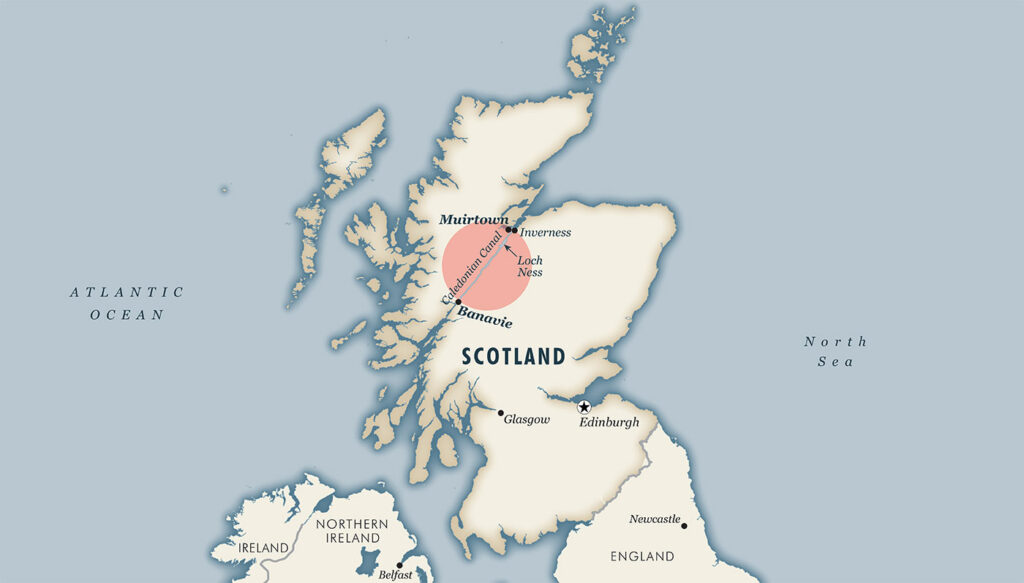
The Caledonian Canal was the idea of Scottish Civil Engineer, Thomas Telford. He was commissioned by the government to look objectively at forming a passage through the highlands from coast to coast. The Government’s intentions were four fold:
- To find promising fishing stations.
- To see if a canal from west to east coast was practical.
- To find suitable harbours in the north-east for trading with the Baltic and used by the Royal Navy.
- To establish ‘a safe and convenient intercourse between the Mainland of Scotland and the Islands’.
Telford consulted with ship owners and sailors who favoured a passageway through the Great Glen. This would save them making the longer and often perilous journey around the North of Scotland via The Pentland Firth.

Canal Construction
Building was underway by 1803, construction started at both ends, which enabled materials to be more easily brought in for the central sections. Thomas Telford had several other projects to supervise at the same time. He was only able to visit the Highlands twice a year so appointed Matthew Davidson to manage the east end and John Telford (no relation) to supervise the trickier western entrance. The arduousness of the construction was seriously detrimental to John’s health and he died in 1807. The site near Fort William was built on rock whilst the entrance near Inverness had 17m of mud at the location of the sea lock. This difficulty was overcome by tipping vast quantities on rock on top of the mud several months before construction took place. The locks that were built were larger than any that had been attempted in the country before and posed a challenge to the engineering teams. There was also the problem of absenteeism with the 3000 labourers who preferred harvesting potatoes and digging peat to building canals. Telford overcame this shortfall in labour by employing an Irish workforce but this move was criticised by many people as one of the aims of the canal project was to provide employment for local people, many of who had suffered extreme hardship during the Highland Clearances.
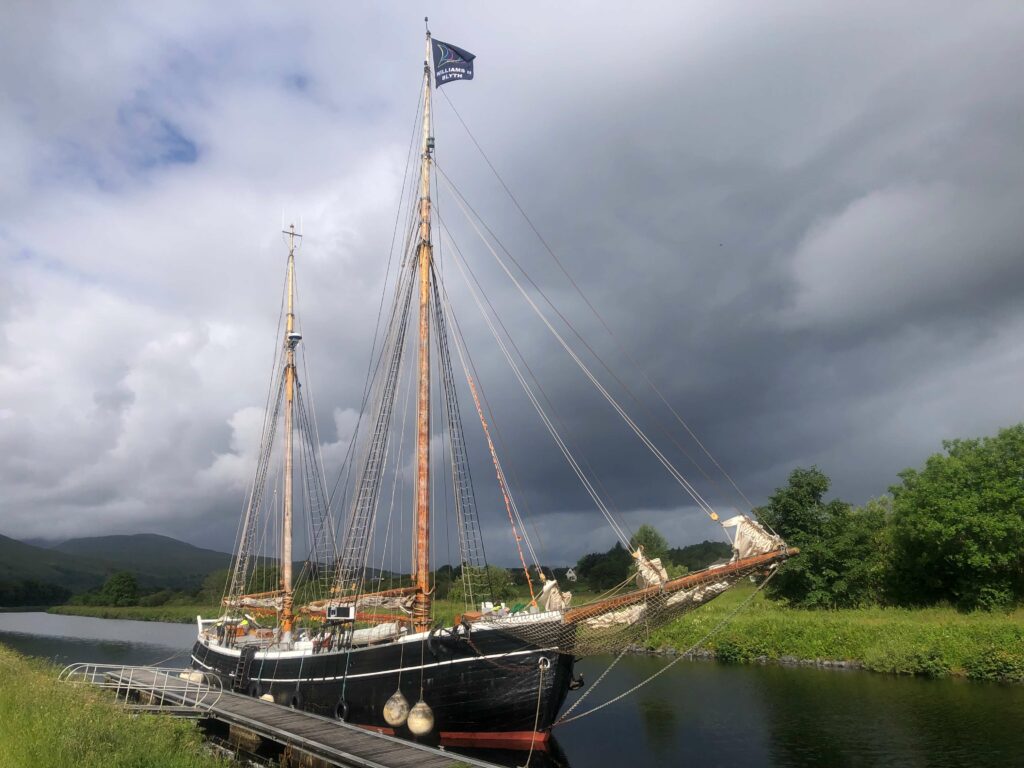
Transiting the Caledonian Canal today
Corpach sea-lock to Loch Lochy
There is no booking system to travel through the canal, although skippers must purchase a licence online prior to entry. Upon arrival, boats are asked to radio to the sea loch keepers on channel 74. The approach to the western entrance of the canal is via Loch Linnhe. Boats can anchor or hold station in a small natural basin near the Corpach sea-loch just outside Fort William. Entry to the sea-lock at Corpach is possible when the tidal height is equal or greater to 1.3m, at Clachnaharry sea-loch the tidal height must be over 1.4m, this is to allow sufficient water to float the sea-lock gates. During spring tides they may remain closed for 2 hours either side of low tide. Once inside the sea lock, boats are lifted higher via 2 more double locks, then a short stretch of canal leads to Neptune’s staircase. This tremendous flight of 8 chambers is an incredible piece of civil engineering. It is a popular place for bystanders to watch the vessels make their progress up the flight, a trip that takes around 2 hours. Once released from the final chamber a beautiful 6-mile section, overlooked by Ben Nevis, carries the sailor to the Gairlochy locks: the gateway to the 7-mile-long Loch Lochy.
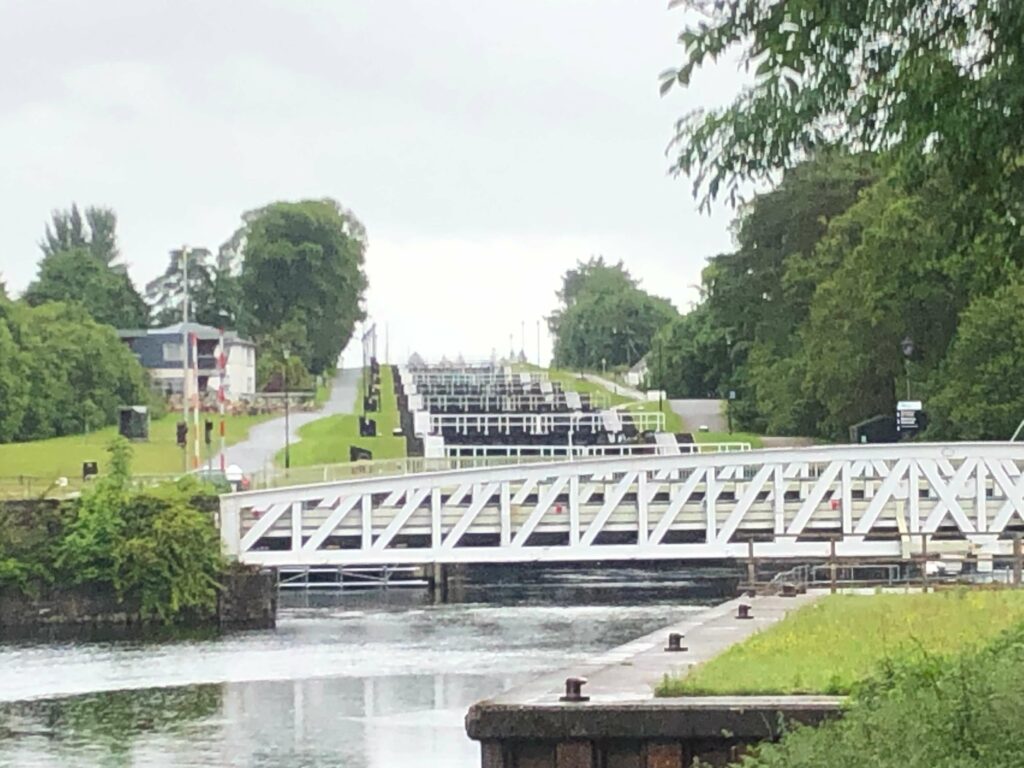
Laggan Locks to Fort Augustus
The eastern passage out of Loch Lochy is surprisingly narrow but well buoyed with channel markers. The next part of the route is through the windy loch chambers at Laggan Lochs, which merge very quickly into Loch Oich, the summit of the canal. This Loch is shallow in parts and care should be taken to stay within the marked channel, it is however one of the prettiest parts of the whole passage, fringed by gently sloping fields, mountains and woodland. At the NE end of this 3-mile Loch, there is a bridge, skippers are required to radio ahead to request a swing. Almost immediately there is Cullochy Lock which can take you by surprise! Another short section of canal moves the traveller to the top of the flight at Fort Augustus. This picturesque small town has a convenience shop, a few pubs and cafes and plenty of gift shops in which to purchase a tartan scarf or a likeness of The Loch Ness monster… The efficient lock masters guide the vessels down the five chambers with practised ease and release them into Loch Ness.
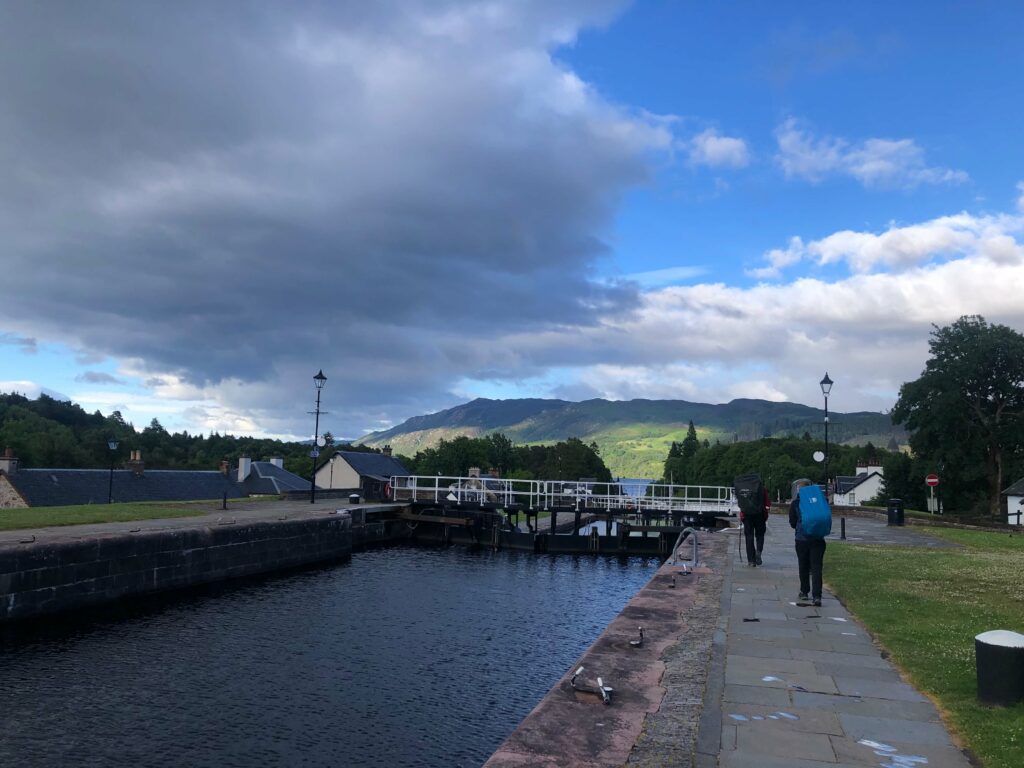
Loch Ness to Inverness
After the confines of the narrow canal it is rather wonderful to see 20 miles of open water stretch out ahead of you and easy to feel the romance that this iconic part of Scotland inspires, especially as you sail past Urquhart Castle. 4 or 5 hours after you entered Loch Ness the waterway narrows briefly before widening again at Loch Dourfour This, in turn, leads to the Dochgarroch loch and a pair of swing bridges. The environment is increasingly urban as you work your way down the flight of 4 locks at Muirtown. Shops and houses accompany you now instead of trees and mountains. After a swing bridge the scenery changes again, the canal widens at Muirtown basin and the pontoons and swinging moorings of Seaport marina come into view. Boats are held on Clachnaharry work loch until the busy railway swing bridge can be opened. Finally, a short waterway leads you mesmerizingly towards the Clachnaharry sea-loch, down onto Moray Firth and the NE coast of Scotland.
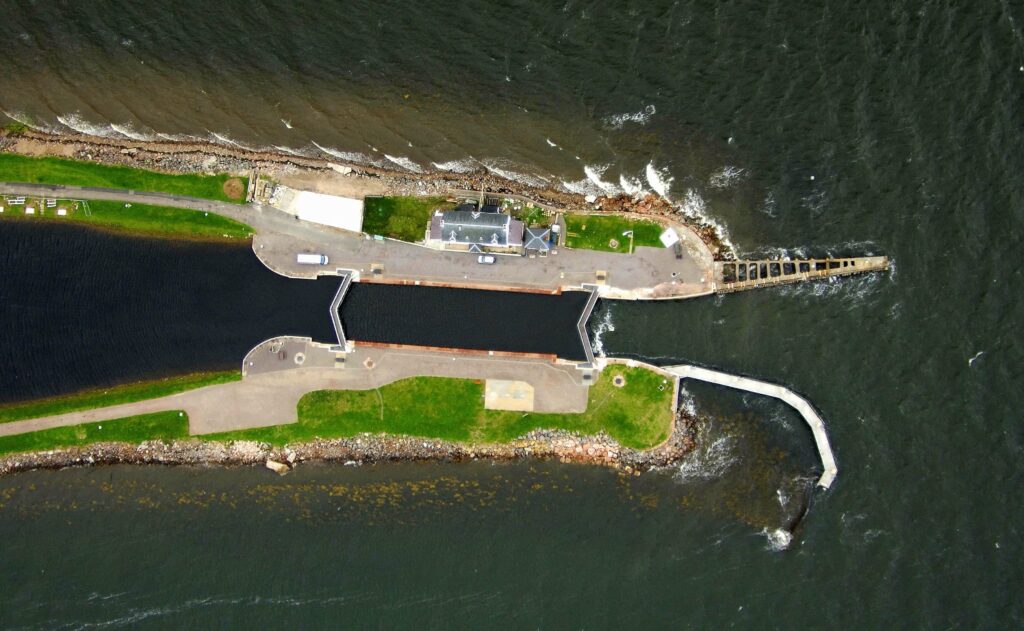
General Information
There is a sliding scale of fees to purchase a pass through the canal which is valid for a week. Most boats transit in 3.5 days if they don’t linger too long, yet boats are at the mercy of the lock keepers and at times gentle chaos is the order of the day. The volume of traffic during the busy summer months can be high leading to delays. No boats can make passage after dark and the locks close at 1800 hrs and don’t open until 0800 hrs, locks and bridges may be closed at lunchtime. Mechanical problems with the lock gates are not uncommon so be prepared to be flexible in your timings. A skipper’s guide can be downloaded prior to transit which shows the location of fuel berths, showers, laundry facilities etc. A hard copy is also handed out to crews when boats first enter the canal.
Useful numbers
Caledonian Canal: 01463 725500
Corpach sea-loch: 01397 772249 or 07917 348025
Clanchnaharry sea-loch 01463 725512 or 07920 237331
Email: enquires@scottishcanals.co.uk
Website: www.scottishcanals.co.uk/canals/caledonian-canal
Navigation
Charts: Eastern approaches: Moray Firth 115, Inverness Firth 1078, Caledonian Canal 1791. Western approaches: Loch Linnhe (north) 2380, Fort William and Corpach 2372.
The Admiralty North coast of Scotland pilotage guide (NP52) and The Admiralty north coast of Scotland guide (NP66). Several other guide books published by Imray, Laurie and Clyde Cruising Club are available.
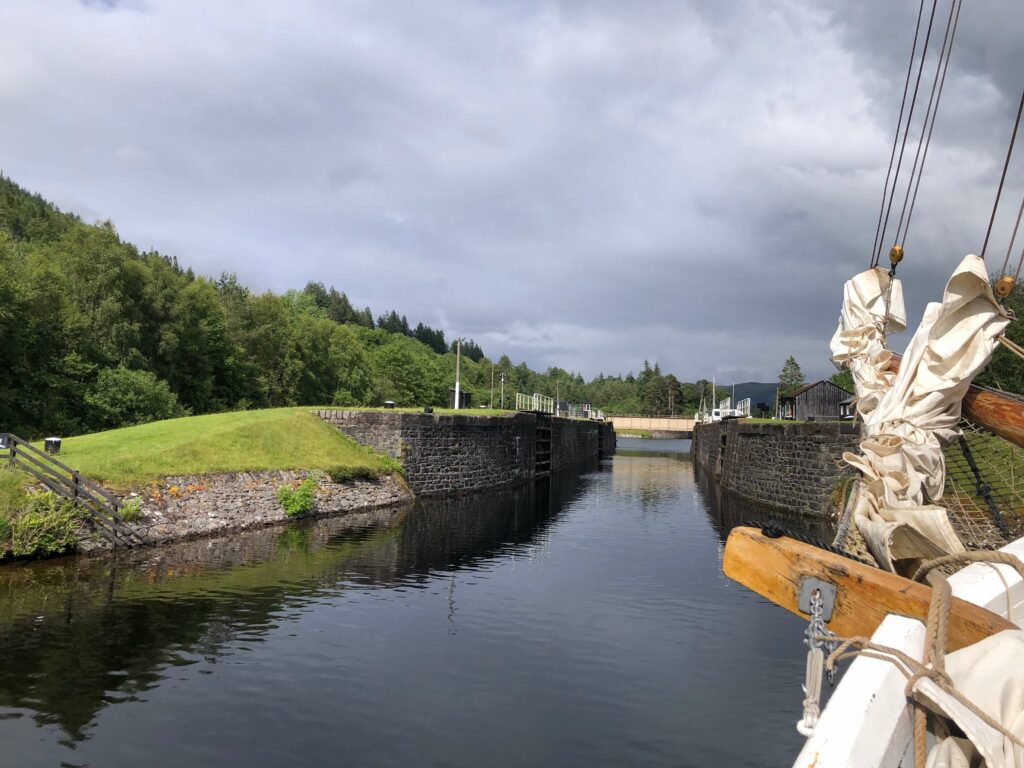

With highly qualified and experienced crew, Halcyon Yachts Ltd offers a dedicated international yacht delivery service. For more information or to see details of their recent deliveries please visit:



